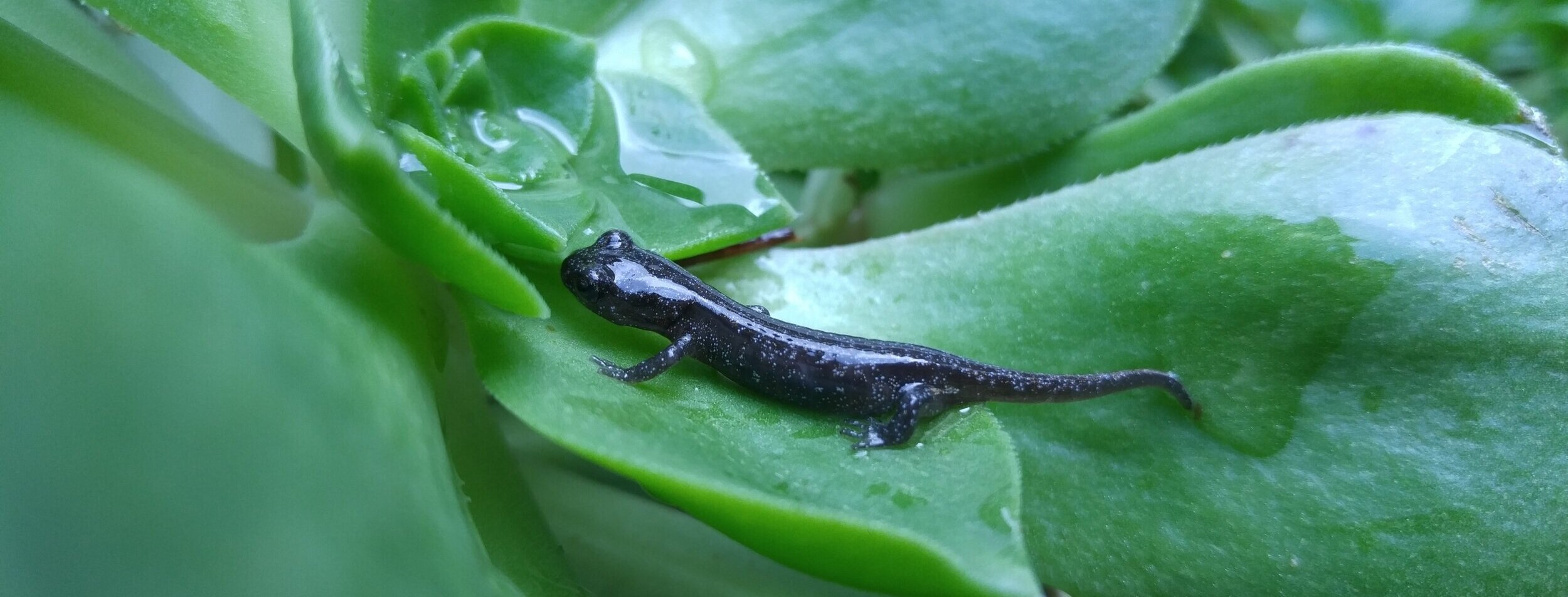Urban Salamander Gardens
How to create a safe space for amphibians
It’s easy to support wildlife by providing habitat in your outside space. Something as simple as adding a native plant or avoiding pesticides might be what’s needed for a salamander to call your garden home.
This guide is specifically for creating a space for slender and arboreal salamanders, the two species most commonly found in San Francisco Bay Area urban spaces, though these gardening ideas do create habitat for reptiles, birds and more!
This is a hatchling arboreal salamander, common in urban areas. This salamander shares a yard with the slender salamanders, dogs and humans. Richmond, California.
Most amphibians have a larval stage that lives in water, such as a tadpole. The arboreal and the slender salamander develop directly from the egg to a terrestrial salamander, skipping the aquatic larval stage completely. This is one of the things that allows them to thrive in extremely urban environments.
The slender salamander is the most common Bay Area urban salamander. This one lives in a Richmond backyard so close to BART, that the ground shakes when the train goes by.
Step One: Plant native plants.
Start with keystone species, the are plants that hold our ecosystem together. You don’t even need a yard - plant them in a pot on your porch! Pick plants using this Bay Area guide to keystone plants.
A great example of a California keystone plant is the California Lilac (Ceanothus species) which is a host for 117 species of butterflies and moths!
Step Two: Avoid pesticides and herbicides.
Amphibians absorb water and oxygen through their skin, making them susceptible to toxins. Plus, salamanders need food! Allowing insects to be part of your outdoor ecosystem helps the entire food web.
If you want to take a deep dive into learning more about how amphibians are affected by pesticides, here’s a good link.
Step three: Leave the leaves.
Leaf litter holds humidity helping create the moist habitat that amphibians are looking for. It also provides shelter and food for insects that salamanders snack on.
Slender salamender, Santa Clara County, Ca.







